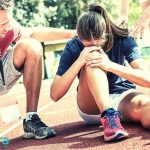In basketball, a “carry” is an infraction that occurs when a player dribbles the ball and momentarily pauses, then resumes dribbling without properly releasing the ball and allowing it to come to rest in their hand. This violation is also known as “palming” or “carrying the ball.” When a carry is called, the opposing team is awarded possession of the ball. It’s essentially a violation of the rules regarding dribbling, which require players to continuously dribble the ball with one hand while moving around the court.
Definition of Carry in Basketball
A carry occurs when a player momentarily pauses their dribble by allowing the ball to come to rest in their hand or palms. This action is in contrast to the continuous and fluid motion required during dribbling, where the ball must make uninterrupted contact with the hand or fingers. Read about How Many Players On A Basketball Team
History and Evolution of the Carry Rule
The prohibition against carrying the ball dates back to the early days of basketball. As the game evolved, so did the rules governing dribbling and ball handling. The intention was to maintain fairness and uphold the integrity of the sport.

Types of Carries in Basketball
Traditional Carry
The traditional carry involves a player momentarily gripping the ball and halting its natural dribbling motion, often to gain better control or deceive defenders.
Double Dribble
A double dribble occurs when a player stops dribbling, holds the ball, and then resumes dribbling again. It’s a violation that results in a turnover.
Palm Carry
The palm carry, also known as “palming,” happens when a player excessively cups the ball with their palm while dribbling, leading to a loss of possession. Discover about How Big Is A Basketball Court
Importance of the Carry Rule
The carry rule serves several crucial purposes within the framework of basketball. Firstly, it promotes fair play by ensuring that all players adhere to standardized dribbling techniques. Secondly, it enhances the fluidity of the game by discouraging actions that impede the natural flow of the ball.
Violation Consequences
When a player is deemed to have committed a carry violation, the opposing team is awarded possession of the ball via a turnover. This penalty can have significant implications, especially in closely contested matches where possession changes can sway the momentum. Learn about Man To Man Defense In Basketball
How to Avoid Carrying Violations
To avoid carrying violations, players must focus on maintaining proper dribbling mechanics. This involves keeping the ball low to the ground, using fingertips for control, and avoiding excessive palm contact.
Famous Carry Incidents
Throughout basketball history, there have been several memorable instances where players were penalized for carrying violations. From high-stakes playoff games to intense rivalries, these incidents have underscored the importance of adherence to the carry rule.
Impact of Carrying on Gameplay
Carrying violations not only disrupt the flow of gameplay but also reflect on a player’s skill and discipline. Teams that consistently commit carrying infractions may struggle to maintain possession and execute offensive strategies effectively.
Referee Interpretation
The interpretation of carry violations can vary among referees and officiating crews. While some infractions are clear-cut, others may involve subjective judgment calls based on the context of the play.
Training to Prevent Carrying
Coaches and players invest significant time and effort in training to prevent carrying violations. Through drills, simulations, and feedback sessions, athletes hone their dribbling techniques and develop a keen understanding of the rules.
Controversies Surrounding the Carry Rule
Like many aspects of sports officiating, the enforcement of the carry rule has sparked debates and controversies. Critics argue that the rule is inconsistently applied, leading to frustration and confusion among players and fans alike.

Carry Rule in Different Basketball Leagues
The carry rule is a universal concept across various basketball leagues and organizations. Whether it’s the NBA, FIBA, NCAA, or grassroots youth leagues, the principles of fair play and adherence to rules remain constant.
Recent Changes and Updates
In recent years, basketball governing bodies have implemented updates and clarifications to the carry rule in response to evolving playing styles and tactics. These changes aim to maintain the balance between player creativity and rule enforcement.
Conclusion
In conclusion, the concept of a carry in basketball represents more than just a technical violation—it embodies the essence of skill, strategy, and sportsmanship. By understanding and respecting the principles underlying the carry rule, players can elevate their game and contribute to the integrity of basketball as a sport.
FAQs
- What is the penalty for a carrying violation?
- A carrying violation results in a turnover, with the opposing team gaining possession of the ball.
- Can carrying infractions be challenged or reviewed?
- As of now, carrying violations are not subject to instant replay review or coach’s challenges.
- Are there instances where carrying is allowed?
- Carrying the ball is only permitted during shooting or passing motions, not during dribbling.
- Do referees provide warnings for carrying violations?
- While warnings are not mandatory, referees may choose to issue verbal reminders to players to correct their dribbling technique.
- Are there specific drills to help players avoid carrying violations?
- Yes, coaches often incorporate dribbling drills that emphasize ball control, hand positioning, and quick movements to mitigate carrying risks.
Alina is a passionate basketball player with a love for the game that knows no bounds. With years of experience on the court, she brings unmatched skill and dedication to her team. Alina’s commitment to excellence both on and off the court sets her apart as a leader and motivator. Whether she’s driving to the basket or encouraging her teammates, Alina’s enthusiasm and sportsmanship shine through. As a valuable member of the basketball team, Alina’s presence elevates the spirit and performance of the entire squad.







